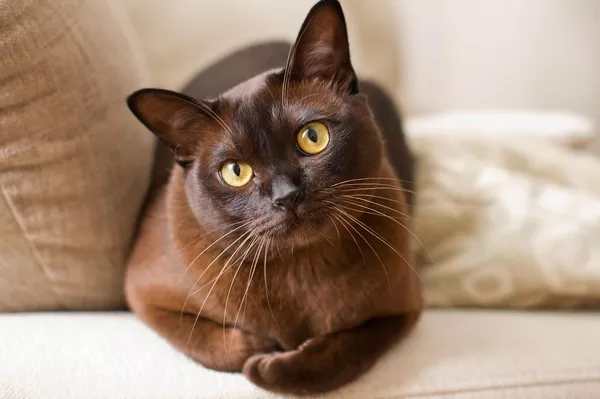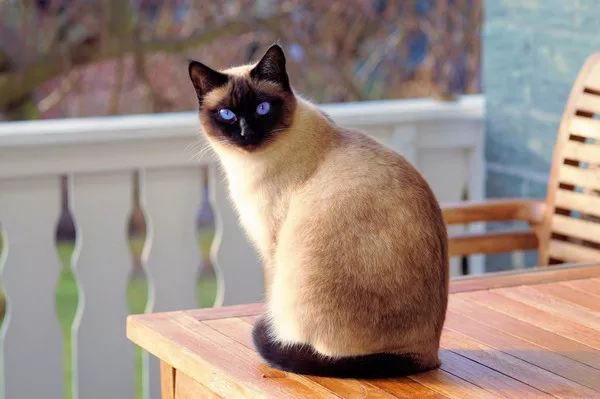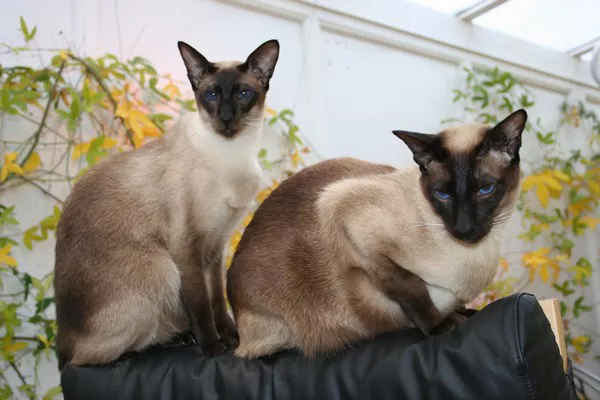Burmese cats are renowned for their affectionate and people-oriented nature. Often described as “velcro cats” due to their tendency to stick close to their human companions, these feline friends are cherished for their loving demeanor and loyal bonds. One common question among cat enthusiasts is whether Burmese cats bond with one person more strongly than others. In this in-depth article, we’ll explore the social dynamics of Burmese cats, their propensity for forming attachments, and whether they indeed have a preference for a particular individual.
Burmese Cats
Burmese cats, originally hailing from Southeast Asia, are a breed known for their striking golden eyes, sleek coats, and outgoing personalities. They are often referred to as “people cats” due to their sociable nature and love for human companionship. With their playful demeanor and affectionate disposition, Burmese cats quickly endear themselves to their families and become integral parts of the household.
Characteristics of Burmese Cats
Before delving into their bonding tendencies, it’s essential to understand some key characteristics of Burmese cats:
Affectionate: Burmese cats thrive on attention and affection from their human companions. They enjoy cuddling, snuggling, and being close to their loved ones.
Social: These cats are highly social creatures and often seek out human interaction. They enjoy being part of family activities and may follow their owners from room to room.
Playful: Burmese cats retain a playful and kitten-like demeanor well into adulthood. They enjoy interactive play sessions and engaging with toys and games.
Vocal: Known for their distinctive voice, Burmese cats are not shy about vocalizing their needs and desires. They may meow to communicate with their owners or express their affection.
Do Burmese Cats Bond with One Person?
The question of whether Burmese cats bond with one person more strongly than others is a topic of debate among cat owners and enthusiasts. While individual personalities and experiences may vary, there are several factors to consider when exploring this question.
Attachment vs. Preference
It’s essential to distinguish between forming attachments and exhibiting a preference for one person. Like many companion animals, Burmese cats are capable of forming strong bonds with their human caregivers. These bonds are built on trust, affection, and shared experiences. However, having a favorite person may not necessarily mean exclusivity or a lack of affection for others in the household.
Social Nature
Burmese cats’ social nature plays a significant role in their interactions with multiple household members. While they may gravitate towards one individual for certain activities, such as cuddling or sleeping, they are likely to engage with other family members for playtime, feeding, and companionship. This widespread socialization contributes to their overall well-being and fulfillment.
See Also: Unveiling the Mitted Cornish Rex: A Comprehensive Guide
Individual Preferences
Just like humans, Burmese cats have unique personalities and preferences. While some may show a clear preference for one person, others may distribute their affection more evenly among household members. Factors such as past experiences, daily interactions, and the quality of the relationship can influence a cat’s attachment to a particular individual.
Shared Experiences
Burmese cats often form strong bonds with individuals who provide them with love, attention, and positive experiences. Regular grooming sessions, interactive playtime, and snuggle sessions can strengthen the bond between a cat and their preferred person. Consistency and reliability in caregiving also contribute to a cat’s sense of security and attachment.
Factors Influencing Bonding
Several factors can influence how Burmese cats bond with their human companions. Understanding these factors can shed light on the dynamics of feline-human relationships and help foster strong, healthy bonds.
Early Socialization
Early socialization plays a crucial role in shaping a cat’s behavior and temperament. Burmese kittens that receive adequate socialization with humans during their formative weeks are more likely to develop trusting and affectionate relationships with people later in life.
Quality of Interaction
The quality of interaction between a cat and their human companion is essential for building a strong bond. Positive experiences, such as gentle handling, interactive play, and affectionate gestures, foster trust and deepen the emotional connection between the cat and their chosen person.
Consistency and Routine
Cats thrive on routine and predictability in their daily lives. Consistent care, feeding schedules, and daily rituals contribute to a sense of security and stability for Burmese cats, strengthening their bond with their caregivers.
Respect for Boundaries
Respecting a cat’s boundaries and preferences is crucial for maintaining a healthy relationship. While Burmese cats are generally affectionate, they may appreciate having space and autonomy at times. Being attuned to their body language and cues helps ensure that interactions are positive and enjoyable for both parties.
Managing Bonding Dynamics
For households with multiple family members, managing bonding dynamics with a Burmese cat involves fostering inclusivity and respect for individual relationships. Here are some tips for ensuring that all family members can enjoy meaningful interactions with their feline friend:
Shared Responsibilities
Encourage all family members to participate in caregiving tasks, such as feeding, grooming, and playtime. Sharing responsibilities helps strengthen the bond between the cat and each household member and promotes a sense of shared ownership and connection.
Individual Quality Time
Allocate dedicated one-on-one time with the cat for each family member. Whether it’s cuddling on the couch, engaging in interactive play, or simply sitting quietly together, these moments of undivided attention help reinforce the bond between the cat and each person in the household.
Respectful Interactions
Emphasize the importance of respectful interactions with the cat. Teach children and other family members to handle the cat gently, respect their boundaries, and interpret their body language effectively. Creating a safe and positive environment encourages trust and strengthens the bond between the cat and all household members.
Open Communication
Maintain open communication among family members regarding their relationships with the cat. Encourage sharing experiences, observations, and preferences to foster understanding and inclusivity within the household. By acknowledging and respecting each person’s unique bond with the cat, you can cultivate a harmonious and loving environment for everyone involved.
Conclusion
While Burmese cats are known for their affectionate and sociable nature, the question of whether they bond with one person more strongly than others is multifaceted. Factors such as individual personality, past experiences, and the quality of interactions all influence the dynamics of feline-human relationships. While some Burmese cats may show a preference for one person, others distribute their affection more evenly among household members.
Understanding and respecting the unique bond between a Burmese cat and their human companions is essential for fostering strong, healthy relationships. By providing love, attention, and positive experiences, all family members can enjoy meaningful interactions with their feline friend and enrich each other’s lives in the process.























